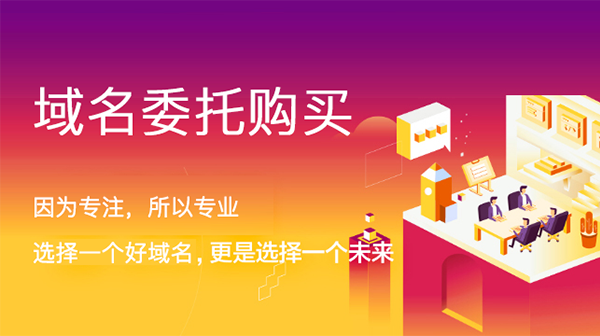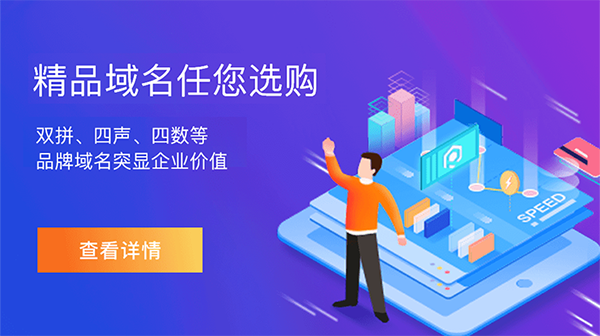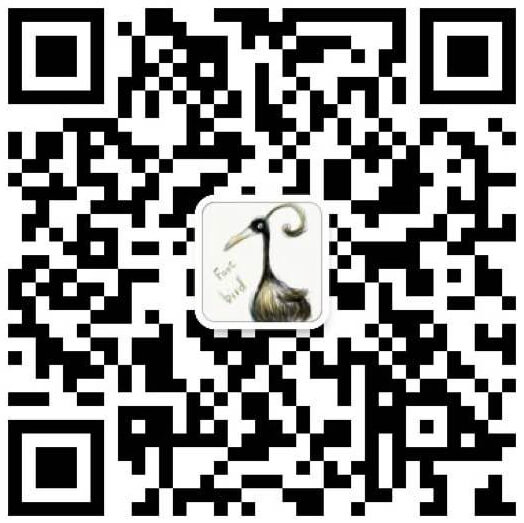 巨峰JF在食盐行业中的票数:512
巨峰JF在食盐行业中的票数:512
【巨峰JF是哪个国家的品牌?】
外推网助力巨峰JF品牌出海!将品牌入驻外推网,定制巨峰JF品牌推广信息,可以显著提高巨峰JF产品曝光,简直是跨境电商爆单神器!目前仅需1000元/年哦~
无棣县盐区位于县境东北部,渤海湾西南岸,海岸线曲长102公里。地势西南高,东北低,坡降为万分之一。盐区滩涂517万公亩,属平原沙基型,盐田土壤以黄褐色砂质粘土为主,底盘坚实,渗透性小。盐区属北温带东亚季风区大陆性气候,四季分明,干湿明显,日照充足,蒸发量大,降雨集中,干燥少雨程度居全省前列,海水浓度层高达为3.6波美度,低至为2.3波美度。
依靠发展盐业得天独厚的自然条件,勤劳的无棣盐民世世代代在这片碱渍的海滩上劳作制盐,不断进行工艺创新和改革。明嘉靖年间,海丰场易煮盐为滩晒。1679年,县境各场废煎兴晒,为盐业中兴奠定了基础。至1945年无棣解放,渤海区第四专署在无棣成立贷委会,发放贷款700万元(北海币)以扶持盐业生产。同时,县政府实行以粮兑盐,原盐专买专卖,消除了盐民销盐、吃粮两大忧患,改善了盐民生活。1949年,全县有盐滩665副,年产原盐1.3万吨。
新中国成立后,无棣盐业生产进入有计划发展的新时期。1950年,无棣调整盐区布局,保留盐滩3.34万公亩。1956年,无棣县盐业走上合作化道路,1957年生产原盐5.71万吨。1958年4月,原埕口盐场办事处改为无棣县盐务局。是年,惠民行署于11月起动工兴建大型国营盐场,后因国民经济困难,于1961年缓建,1964年始,逐步形成生产能力。1966年,全县生产原盐6.7万吨。1987年,无棣盐业进入大发展时期,埕口盐场投资1600万元建成东结晶区项目。1988年,县盐场老滩改造,新建盐田23万公亩,生产能力达到13万吨。1990年,埕口盐场老滩改造,生产能力达到80万吨。是年,鲁北盐场、第二盐场开始建设,车网城盐场重建。至20世纪末,无棣县盐田生产面积达到356万公亩,设计生产能力205万吨。2004年,无棣县再次掀起盐业开发会战高潮,提出“振兴盐业经济,打造中国海盐(盐化工)基地”的战略口号,对全县517万公亩宜盐滩涂面积进行了整合、开发,至2005年3月底会战告捷,共计整合滩涂25万公亩,兑现补偿资金3000余万元,至2006年,全县盐田总面积达到1389万公亩,全县原盐年设计生产能力达到400万吨。在此次开发过程中,无棣县提出的盐业企业管理“五统一”原则,受到中盐总公司、中盐协会的高度重视,并予以推广。该原则提出,对新建民营盐业企业及乡镇盐业企业,全部纳入海丰集团,由海丰集团实行统一管理、统一计划、统一考核、统一销售、统一实现和上缴税金。“五统一”原则为民营资本参与盐业开发,实现规模化经营,保障盐税足额及时入库提供了良好的政策保障。
无棣盐业的发展动力在于盐业科技的发展,从二十世纪五、六十年代生产工具的改革,到70年代开创“秋灌春收,越冬晒盐”,80年代采用“死碴池底,活碴结晶,撇淡渡伏法”。在场区规划方面,2004年的盐业大开发实行由指挥部按照“三化四集中”原则进行统一规划布局。目前,各盐场在推行“新、深、长”工艺(即新卤、深卤、适当结晶)的同时,有计划地加大科技投入,提高塑苫面积,加强塑苫管理,使盐田抵御自然灾害的能力进一步提高。随着科技进步,从60年代开始,逐步由动力纳潮扬水取代了风车和自然纳潮,以电力、机械动力代替了人工修滩、扒盐、集坨、装车等,以汽车、火车、轮船代替了畜力车运盐,使盐民从繁重的体力劳动中解放出来。同时,实物劳动生产率由1952年的31.7吨/人,提高到2006年的630吨/人;全员劳动生产率由1952年的人均830元,提高到目前的3100元/人。
无棣盐区依托丰富的卤水资源,1958年起开始利用海水进行土法盐化工生产,由于技术条件差,生产成本高,缺乏市场竞争力,一直处于萌芽状态。90年代初,无棣盐化工业开始机械化、连续化生产,当时有埕口盐场、鲁北盐场、县盐场三处企业,产品以溴素为主,年生产能力4100吨。经过2004年盐业大开发,全县溴素生产企业达到7家,年生产溴素能力达到7300吨,另有氯化钾、氯化镁、无水硝、溴化钠、溴化钾、溴化铵、氢溴酸,2,6—二溴四硝基苯胺、十溴二苯醚等10余个品种。2006年,在天气等自然基础条件不利于盐及盐化工业生产的条件下,无棣盐业企业共计生产溴素4600多吨,2007年可望达到5800吨。
二十世纪80年代初,无棣盐区开始发展海产养殖业。1991年,鲁北盐场与县盐场同时进行“一水多用”技术研究,经过两年的科研攻关,取得了阶段性成果。1992年7月,国家星火科技项目—无棣县盐场“卤虫高盐水域工厂化放牧与加工”在国家科委立项,1994年通过专家验收。目前,无棣盐业海水养殖已成为盐业三大主导产业之一,产品有鱼、虾、蛤、蟹、海参、卤虫等6个系列近20个品种,年产值5000余万元,占盐业总产值的近30%。盐化工及海水养殖业的兴起,使无棣盐业的总体产业结构和产品结构日趋合理,促进了盐业企业综合竞争力的提高。
解放前,盐民生活极其贫困,住的是低矮、潮湿的“滩屋子”,吃的是红高粱窝头,没有任何机械工具,生产全部依靠体力劳动,条件异常艰苦。解放后,盐区职工物质、文化生活水平不断提高。自1956年起,盐区政府和企业先后办起职工子弟小学5处,中学1处,幼儿园3处。目前,企业办学已全部转为政府办学适龄儿童全部入园或入学,实现基本普及九年义务教育。此外,盐区先后建起职工医院2处,医务室5处,有了食堂、集体宿舍、职工宿舍楼、俱乐部、电影队、电视差转台、图书室、业余文体队等。2006年,全县盐业企业职工年产平均收入13000元。
英文翻译:Wudi salt area is located in the northeast of the county, on the southwest Bank of Bohai Bay, with a coastline of 102 kilometers. The terrain is high in the southwest and low in the northeast, with a gradient of 1 / 10000. 5.17 million hectares of beach in the salt area belongs to the plain sand base type. The soil in the salt field is mainly yellowish brown sandy clay with solid chassis and low permeability. Salt area belongs to the continental climate of the North Temperate East Asian monsoon area, with distinct four seasons, obvious dry and wet conditions, sufficient sunshine, large evaporation, concentrated rainfall, and the degree of dryness and lack of rainfall ranking the first in the province. The sea water concentration layer is as high as 3.6 Baume Degrees, as low as 2.3 Baume degrees. Relying on the advantaged natural conditions of salt industry development, industrious Wudi salt people have been working on this alkali beach for generations to make salt, and constantly carrying out technological innovation and reform. During the Jiajing period of the Ming Dynasty, haifengchang was easy to boil salt for beach drying. In 1679, all the farms in the county were decocted and dried, which laid the foundation for the prosperity of salt industry. By the liberation of Wudi in 1945, the fourth special office of Bohai district established a loan Committee in Wudi, which granted a loan of 7 million yuan (Beihai dollars) to support salt production. At the same time, the county government implemented grain for salt, and the original salt was sold exclusively, eliminating the two major difficulties of salt selling and eating, and improving the life of salt people. In 1949, there were 665 salt flats in the county, with an annual output of 13000 tons of raw salt. After the founding of new China, Wudi salt industry entered a new period of planned development. In 1950, Wudi adjusted the layout of the salt area and preserved 33400 hectares of salt beach. In 1956, Wudi County's salt industry embarked on the road of cooperation. In 1957, it produced 57100 tons of raw salt. In April 1958, the original Chengkou salt field office was changed to Wudi County Salt Bureau. In that year, huiminxing administration started construction of large-scale state-owned salt farms in November. Later, due to national economic difficulties, it was postponed in 1961 and gradually formed production capacity in 1964. In 1966, the county produced 67000 tons of raw salt. In 1987, Wudi salt industry entered a period of great development. Chengkou salt field invested 16 million yuan to build the project of East crystal zone. In 1988, the old beach of the county's salt field was reconstructed, and 230000 public mu of salt field was newly built, with a production capacity of 130000 tons. In 1990, the old beach of Chengkou salt field was reconstructed with a production capacity of 800000 tons. In the same year, the construction of Lubei salt field and the second salt field began, and chewangcheng salt field was rebuilt. By the end of the 20th century, Wudi County's salt field had a production area of 3.56 million mu and a design production capacity of 2.05 million tons. In 2004, Wudi County again set off the climax of salt industry development battle, put forward the strategic slogan of "vitalizing salt industry economy and building China's sea salt (salt chemical) base", integrated and developed 5.17 million hectares of salt beach area in the county, and by the end of March 2005, the battle was successful, totaling 250000 hectares of beach area, with more than 30 million yuan of compensation funds. By 2006, the total area of salt field in the county reached By 13.89 million mu, the annual design production capacity of the county's original salt has reached 4 million tons. In the development process, Wudi County put forward the "Five Unifications" principle of salt enterprise management, which was highly valued by China Salt Corporation and China Salt Association and promoted. According to this principle, all the newly-built private salt enterprises and township salt enterprises will be incorporated into Haifeng group, and Haifeng group will implement unified management, unified planning, unified assessment, unified sales, unified realization and tax payment. The principle of "Five Unifications" provides a good policy guarantee for private capital to participate in the development of salt industry, realize the large-scale operation, and ensure that salt tax is fully and timely put into storage. Wudi salt industry is driven by the development of salt industry science and technology. From the reform of production tools in the 1950s and 1960s to the creation of "autumn irrigation and spring harvest, winter salt drying" in the 1970s, and the adoption of "dead slag pool bottom, live slag crystallization, skimming and crossing the Fu method" in the 1980s. In terms of site planning, the headquarters carried out unified planning and layout for the salt industry development in 2004 according to the principle of "three modernizations and four centralizations". At present, while carrying out "new, deep and long" technology (i.e. new brine, deep brine and proper crystallization), salt farms should increase scientific and technological input, increase plastic mulch area and strengthen plastic mulch management in a planned way, so as to further improve salt fields' ability to resist natural disasters. With the progress of science and technology, from the 1960s, the wind turbines and natural tides were gradually replaced by the power to absorb the tide and lift the water, and the artificial beach repair, salt raking, Tuo collection and loading were replaced by the electric power and mechanical power, and the animal powered vehicles were replaced by the automobiles, trains and ships to transport salt, so that the salt people were liberated from the heavy physical labor. At the same time, the physical labor productivity increased from 31.7 tons / person in 1952 to 630 tons / person in 2006; the total labor productivity increased from 830 yuan per capita in 1952 to 3100 yuan / person at present. Wudi salt area relies on rich brine resources, and began to use seawater for local salt chemical production since 1958. Due to poor technical conditions, high production costs and lack of market competitiveness, Wudi salt area has been in its infancy. In the early 1990s, Wudi salt industry began to mechanized and continuous production. At that time, there were three enterprises, Chengkou salt field, Lubei salt field and County salt field. The products were mainly bromine, with an annual production capacity of 4100 tons. After the great development of salt industry in 2004, there were 7 bromine production enterprises in the county, with an annual capacity of 7300 tons. In addition, there were more than 10 products, such as potassium chloride, magnesium chloride, sodium bromide, potassium bromide, ammonium bromide, hydrobromic acid, 2,6-dibromo-tetranitroaniline, decabromodiphenyl ether, etc. In 2006, Wudi salt enterprises produced more than 4600 tons of bromine under the condition that the weather and other natural basic conditions were not conducive to salt and salt industry production, and it is expected to reach 5800 tons in 2007. In the early 1980s, Wudi salt area began to develop marine aquaculture. In 1991, Lubei salt field and County salt field carried out "one water multi-purpose" technology research at the same time, after two years of scientific research, and achieved phased results. In July 1992, the national Spark Science and technology project - Wudi County salt farm "factory grazing and processing of Artemia high salt water area" was approved by the national science and Technology Commission, and passed the expert acceptance in 1994. At present, Wudi salt industry mariculture has become one of the three leading industries of salt industry. Its products include nearly 20 varieties of 6 series, such as fish, shrimp, clam, crab, sea cucumber and Artemia, with an annual output value of more than 50 million yuan, accounting for nearly 30% of the total output value of salt industry. With the rise of salt chemical industry and mariculture, the overall industrial structure and product structure of Wudi salt industry are becoming more reasonable, which promotes the comprehensive competitiveness of salt industry enterprises. Before liberation, the salt people lived in extreme poverty. They lived in low, damp "beach houses" and ate red sorghum buns. They did not have any mechanical tools. Their production depended entirely on physical labor. The conditions were extremely hard. After the liberation, the material and cultural living standards of the workers in the salt area continued to improve. Since 1956, the government and enterprises of salt district have successively set up 5 primary schools, 1 middle school and 3 kindergartens for children of workers. At present, all the school-age children in enterprises have been transferred to the schools run by the government, and the nine-year compulsory education has been basically popularized. In addition, two staff hospitals and five infirmaries have been built in salt District, including canteen, dormitory, staff dormitory building, club, film team, TV turntable, library, amateur sports team, etc. In 2006, the annual average income of salt enterprise employees in the county was 13000 yuan.
本文链接: https://www.waitui.com/brand/440ab22ef.html 联系电话:请联系客服添加 联系邮箱:请联系客服添加

















 浙公网安备 33011802001999号
浙公网安备 33011802001999号
